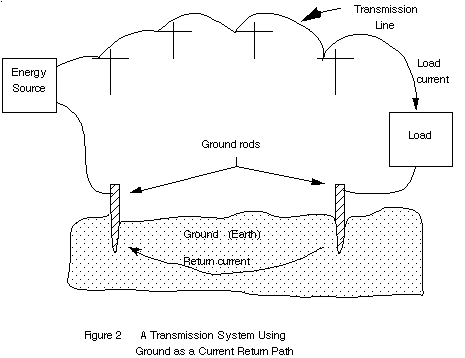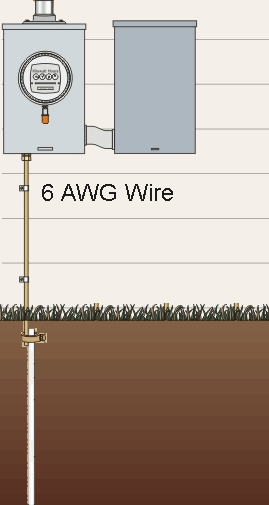Earth Ground
A true earth ground, in common electrical terminology and as defined by the National Electrical Code, physically consists of a conductive pipe or rod driven into the earth to a minimum depth of 8 feet.
A house ground is easy to find, all you have to do is look outside at the power feed coming in, there should be a thick bare wire coming down the side of the structure that attaches to either a steel pipe or a thick rod, driven into the ground. The neutral is tied to earth ground for lightning protection and to provide a path for any high voltage leakage from the power company's step down transformer. The ground is tied to the neutral to provide a return path to trip the breaker in the event of a fault. The main breaker box should be the only point where neutral/ground need to be connected, never at the outlets or other places in the electrical system.
Install Residential Grounding Rod
Grounding rods are driven into the earth to a depth of at least 8 feet. If rock is hit at less than 8 feet, the grounding rod can be driven at an angle but the angle cannot exceed 45 degrees. A grounding rod can also be buried on top of rock in a trench that is 2 1/2 feet deep and 8 feet long. Ground clamps hold the ground conductor and the grounding rod together without losing conductivity when exposed to weather and movement. When the resistance of a single ground rod exceeds 25 ohms, an additional ground rod installed not less than 6 feet away is required.
At the Breaker Box / Panel
The ground wire should be bonded at the main breaker panel. However they must NOT be bonded anywhere else in the system including sub panels. There should be a single continuous 6 gauge copper wire going from the panel to the lug on the outdoor grounding rod. Provide protection of the ground wire against mechanical damage anywhere it is exposed by using non-metallic conduit. Some panels have two separate connection points but on many panels both the earth ground and utility neutral connect to the neutral bus.

